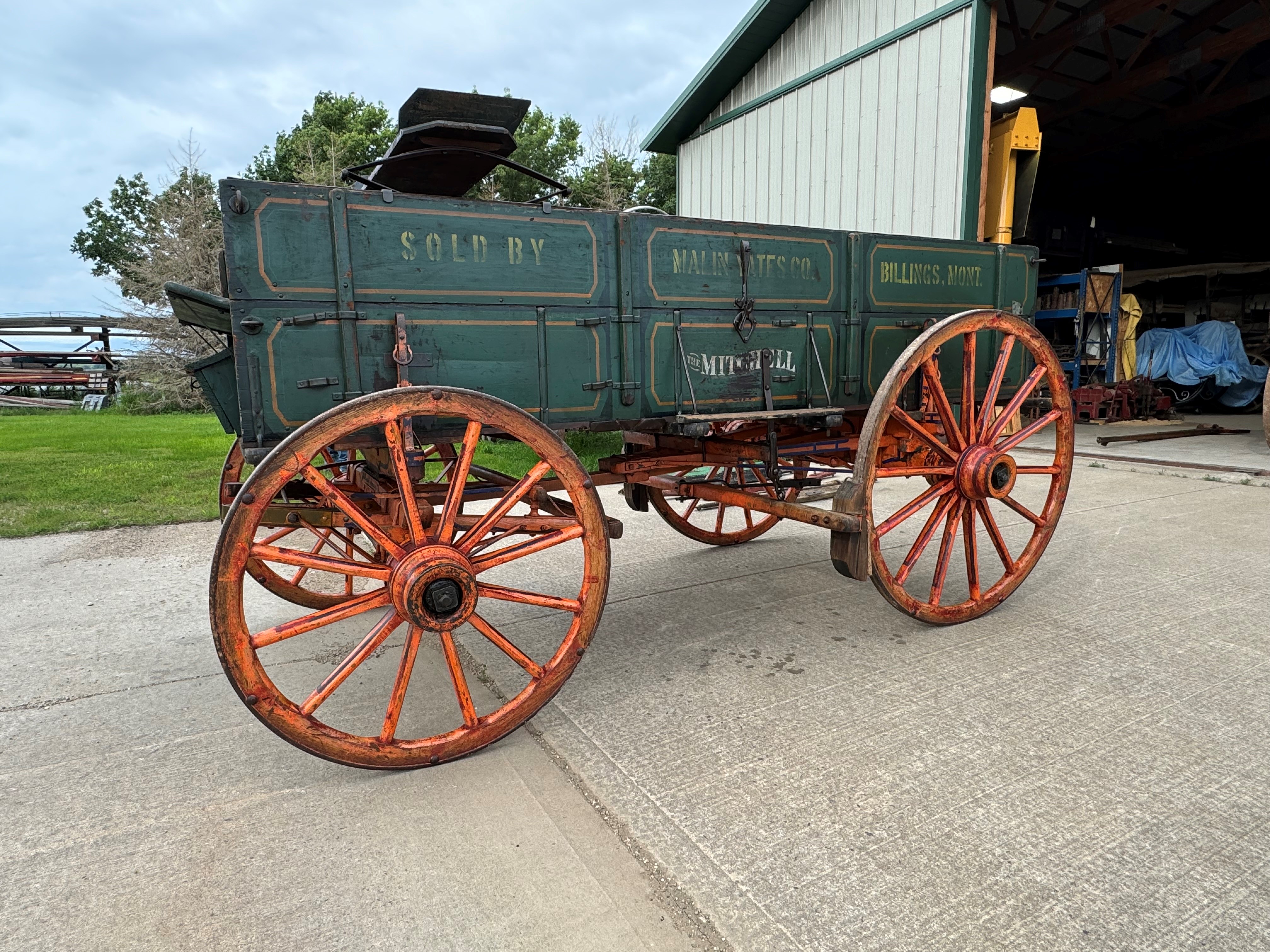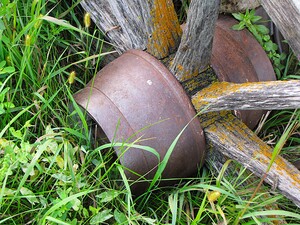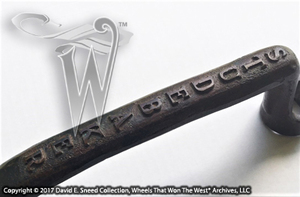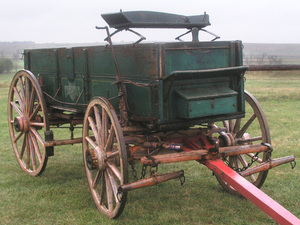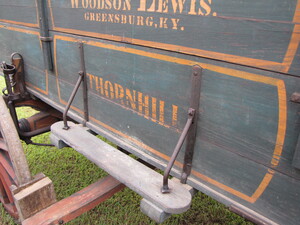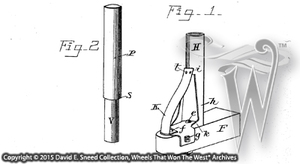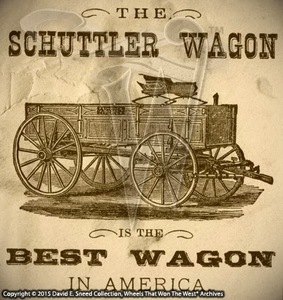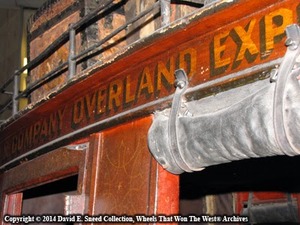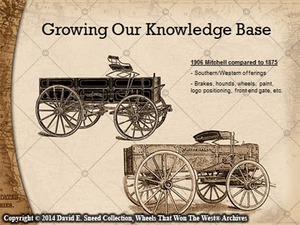I had a good friend (not a wagon guy) recently admit that he couldn't determine what made one wagon different from another. While his candor is admirable, the comment is akin to saying we can't distinguish one person from another. Even identical twins have differences; we just need to look closer. It's the same with antique vehicles. When it comes to wagons, there are thousands of distinguishing sizes, types, brands, and designs. From a distance, they can all look alike but closer inspection is where the details become more obvious. Once you understand those variables, there's a world of information just waiting to be uncovered.
One thing to remember about period wagons is that some designs are engineered for use within a specific region or type of terrain. Because of that, parts of the U.S. may seldom - if ever - be exposed to a specific configuration. A good case in point is that of the Mountain wagon. Before going any further, I should clarify that the 'Mountain' wagon style I'm referring to is not the one with a pair of long side springs and another set of elliptic springs. That is a lighter-weight, excursion style set of wheels and not necessarily a heavier, freighting-type vehicle.

This type of Mountain wagon utilizes springs and is a lighter, excursion or touring type of people hauler. It is a vastly different design than the freighting style of Mountain wagon mentioned in this blog post.
The wagon I'm pointing out is a dead axle wagon that looks like a heavy duty farm wagon; a vehicle built for extreme conditions, loads, and terrain. Another way of looking at it is that Mountain wagons are the all-terrain, cargo-hauling vehicles of the wagon world. As such, there are a number of traits that are fairly consistent between brands. Typical features include heavier brake blocks, a larger brake roller, brake hanger supports, tire rivets to help keep the steel tire in place, an overlapping reach, steel extension skeins vs. cast skeins, beefier axles with heavier reinforcement, and additional supplemental supports throughout the running gear and box. While most of these vehicles will have all of these features, traditional farm wagons can also have some of the elements. It takes a trained eye to spot the details and dissect the design.
Even with all of these similarities between brands, there can be differences. Wheel heights and tire widths can vary as can the box dimensions, wheel track, trim styles, jockey boxes, seat configurations, box styles, and more. These wagons can also carry different identity terms. Phrases like Pacific wagon, California rack bed, and High (or Low)-Wheeled Mountain wagons are generally brand, region, or preference-specific adaptations of a Mountain wagon design. Ultimately, these special rigs can exude a real flavor of the Old West. Their look, feel, and purpose hearkens back to a time when horseflesh was king and wooden wagons ruled the roads and trails. While lighter farm wagons certainly carried their fair share of materials in the West, Mountain wagons were what we might refer to today as "Professional Grade" vehicles. The only freighters more substantial were the early Conestogas or the tall-sided freighters often seen in the West.




During our travels, I also came across a nice example of a Mountain wagon at Hansen Wheel & Wagon Shop. Doug Hansen had recently acquired the piece and has it for sale. It's a Mitchell; an excellent brand with a legendary heritage and instant name recognition. For those interested in more details related to the Mitchell company, you can read the blog I posted on June 22, 2016. It's entitled, "Mitchell Wagon Company Closes In Racine." I've listed it alongside this post so you're able to quickly access it.
This particular wagon has a lower center of gravity. It's equipped with 48-inch rear wheels and 40-inch on the front. The box is a 10' 6" wide-track design with a 42-inch box width (outside to outside dimensions). Tire width is 1 3/4". Top to bottom, I was surprised at how much original paint this Mountain wagon has retained. It would be impressive for a traditional farm wagon to have so much paint but to find an actual Mountain wagon with so much surviving color is unusual. These pieces were often used so harshly that the visual appeal and overall condition were the first things to suffer. Sideboards had a way of getting heavily scuffed... spokes and felloes were banged up by rocks, hillsides, holes, and debris... the power of the sun faded away logos... and heavy loads applied pressure that took a toll on the box and the gear. The rolling warrior at Hansen's, though, was clearly prized and well taken care of. So much so that whether a person is looking for an extraordinary piece for a collection or even a head-turning, western chuck wagon, this one will easily rank among the best survivors. It not only stands out in a crowd but serves as a noticeable reminder of the same get-it-done individualism that built America. You may not see it on the www.hansenwheel.com website as they haven't had it long and likely won't have it available much longer!





Coming soon... During our recent trip, I also had an opportunity to visit some other folks in Joliet, Montana. Both are well known and, even though they're retired, their legacy continues and they're busier than ever.
